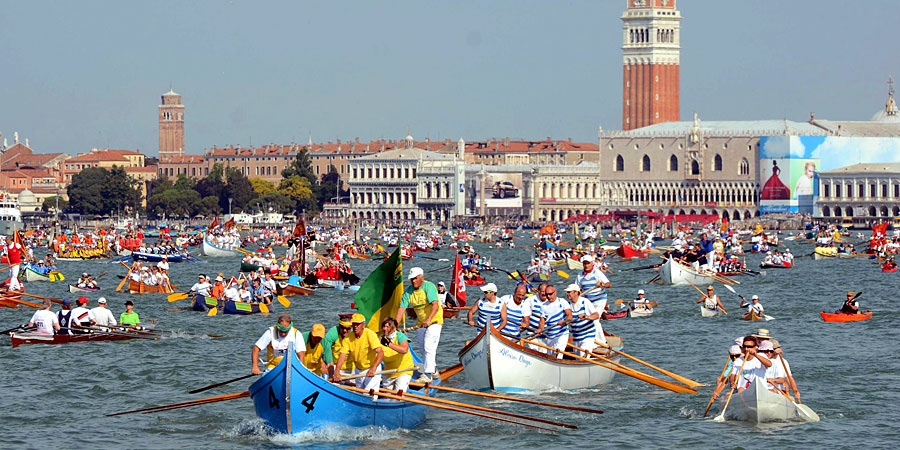The Vogalonga is a non-competitive regatta which began in 1975, when a group of Venetians, in a protest against the damage caused by use of power boats in the historic city created this event.
The Vogalonga is on Sunday at the end of May or first of June.
The participants in the Vogalonga meet in front of the Ducal Palace and sing hymns to St Mark before the race begins. The regatta, which only allows the participation of row boats, happens over a 30km long course, first crossing the lagoon to Burano Island then returning to the city through the neighbourhoods of Cannaregio and Grand Canal before arriving at St Mark’s Square.
The number of participants in the Vogalonga has grown spectacularly since its inception; today the event draws participants from all over the world, many of them in historical or traditional boats from their countries, such as Chinese Dragon Boats. And the bravest of them swap the oar for swimming.
All participants who reach the finish line, excluding disqualified crews, receive a commemorative medal and a certificate of participation. In addition, sometimes additional prizes are raffled off, donated by associations and institutions.


